BUDGET: 10 crore INR and above (USD1.48 million and above)
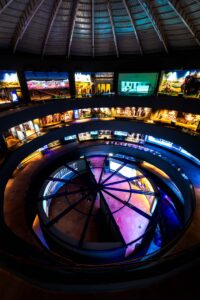
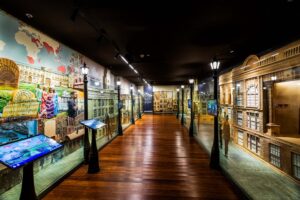
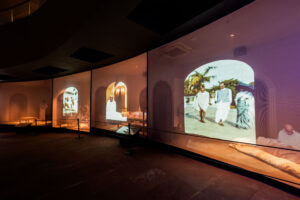
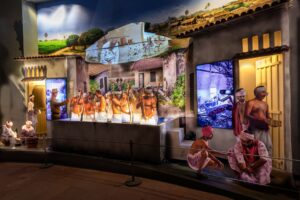
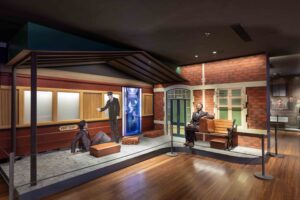
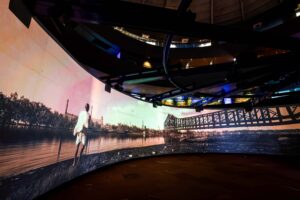
Project Overview
The Bapu Tower is situated in Patna, which was initiated by the Government of Bihar and announced by Hon’ble Chief Minister Shri Nitish Kumar on the Centenary Celebration of Mahatma Gandhi’s Champaran Satyagraha.
Bapu Tower is envisioned as a landmark structure celebrating Mahatma Gandhi’s enduring legacy and his pivotal role in India’s independence movement. Conceived as both a symbolic and functional public space, the tower aims to serve as a hub for reflection, education, and cultural engagement.
This initiative forms part of a larger vision to create architectural landmarks that embody Gandhi’s principles of peace, non-violence, and social justice—ensuring that his ideals remain relevant and accessible to future generations.
Bapu Tower Museum thoughtfully showcases the life and legacy of Mahatma Gandhi, offering immersive insights into his history, social initiatives, lifestyle, and cultural impact. Spread across four floors, the museum features both captivating indoor and outdoor exhibits, seamlessly connected by a grand ramp that symbolises Gandhi’s journey and enduring influence.
What did the client want to achieve?
The primary goals for creating the Museum were to showcase and highlight the words and thoughts of Mahatma Gandhi to a new generation, in a manner that will engage and excite a new audience. The Government of Bihar aimed to demonstrate the enduring relevance of his words and thoughts through the design, planning, and use of materials in the Building, as well as the Exhibits. It has been shown that a Museum Dedicated to the Father of the Nation can be
contemporary, modern and still timeless.
•To commemorate Mahatma Gandhi’s life and work through an iconic structure.
•To create an educational and experiential space for citizens, researchers, and tourists.
•To highlight Bihar’s role in the freedom movement, particularly the Champaran Satyagraha.
•To integrate modern storytelling techniques to present Gandhi’s relevance in contemporary times.
Scope of work your company was involved in
The scope of work included activities of Consultancy for Comprehensive Design Services for EXHIBIT DESIGN on the Proposed Bapu Tower, at Patna, which provides for comprehensive Exhibition Design, and Exhibition Fabricators. Design Habit was responsible for the entire scope of work. It represented the Consultant of qualified Exhibition Designers and any other Consultants, including those with speciality scopes required for the comprehensive design and production of exhibitions.
What Key Challenges were faced?
One of the key challenges in developing Bapu Tower was ensuring historical accuracy. While Mahatma Gandhi is globally respected, he has also been subject to criticism and misrepresentation. The team aimed to present a balanced and inspiring image of Gandhiji, rooted in truth.
This required rigorous research. Scholars sifted through extensive archives and literature to extract authentic information about Gandhi’s life and movements, with sensitivity to context.
Managing a large, multidisciplinary team across India posed another challenge. Artists, vendors, and technical experts from different regions had to align with a unified vision, requiring strong coordination and communication.
Translating the design into a visitor-ready experience—with immersive storytelling and high-end fabrication—was complex. Tight timelines and budgets made quality assurance critical.
The project also involved multiple stakeholders, including government bodies, experts, and contractors. Coordinating inputs and meeting technical standards demanded meticulous planning and supervision.
The COVID-19 pandemic caused significant delays early on. Without it, the project would have progressed more smoothly.
How were those challenges resolved?
Challenges were met with clear strategy, adaptive planning, and strong collaboration.
1. Ensuring Historical Accuracy:
A research team of historians and scholars verified all content using primary sources like letters, speeches, and official archives.
Every script, caption, and exhibit underwent expert fact-checking to maintain accuracy and balance.
The narrative tone focused on Gandhiji’s core values without distortion or over-glorification.
2. Coordinating Nationwide Teams:
A central project team coordinated designers, vendors, and authorities.
Digital tools and centralised documentation streamlined communication and progress tracking.
Regular virtual and on-site meetings ensured alignment with design intent.
3. Aligning Fabrication with Design:
Mock-ups and prototypes were created for key elements.
Workshops trained fabricators on material techniques and creative briefs.
On-site supervision ensured quality and design fidelity.
Flexible production schedules allowed controlled adjustments.
4. Managing Stakeholders & Procurement:
A detailed Gantt chart tracked all timelines and approvals.
Pre-approved vendor networks ensured faster, quality procurement.
A liaison team coordinated with government bodies and suppliers to resolve bottlenecks efficiently.
How has your work helped the client
Design Habit played a vital role in the successful execution of the Bapu Tower project. From concept to completion, the studio remained deeply involved—offering strategic input, creative leadership, and coordination.
A key contribution was the Design Control Document, the guiding framework—or “Bible”—for the entire project. It defined the vision, design language, materials, technical specifications, and execution strategy, ensuring consistency across teams.
Design Habit’s role extended beyond design:
• Cost estimation and budget alignment
• Finalisation of exhibits and materials
• Coordination with fabrication teams
• Art direction, reviews, and approvals
• Delivery of print-ready files
• On-site supervision
They served as both creative partner and project management support—assisting the client with decisions, documentation, resources, and timelines. Every element, from sketches to installation, was reviewed by Design Habit, reflecting the deep trust in their expertise.
Their structured and hands-on approach proved invaluable during execution, enabling completion of the entire installation in just eight months. Design Habit was more than a design agency—they were a strategic collaborator in bringing Bapu Tower to life.
What are you most proud of about the project?
The outcome of the Bapu Tower project has been remarkable. Since its inauguration, the museum has received an enthusiastic response, with a steady stream of visitors. Many have praised its content and actively encouraged others to visit, creating strong word-of-mouth momentum.
Celebrities, public figures, and journalists have hailed it as one of the finest museums dedicated to Gandhian values. Its integration of technology, art, and narrative makes the experience both informative and emotionally powerful.
Social media feedback has been overwhelmingly positive. Politicians, influencers, and visitors have shared photos and appreciation, amplifying its reach.
A moving moment came when Gandhiji’s grandson and family visited. Their heartfelt response validated the authenticity and respect with which the project was executed.
For Design Habit, this success is a matter of immense pride. Their involvement from concept to completion was central to shaping the experience. Bapu Tower now stands as a beacon of knowledge and heritage—a tribute to Gandhi and to the power of thoughtful, collaborative design.
VIDEO: https://www.youtube.com/watch?v=uw9ecPJwxrY












